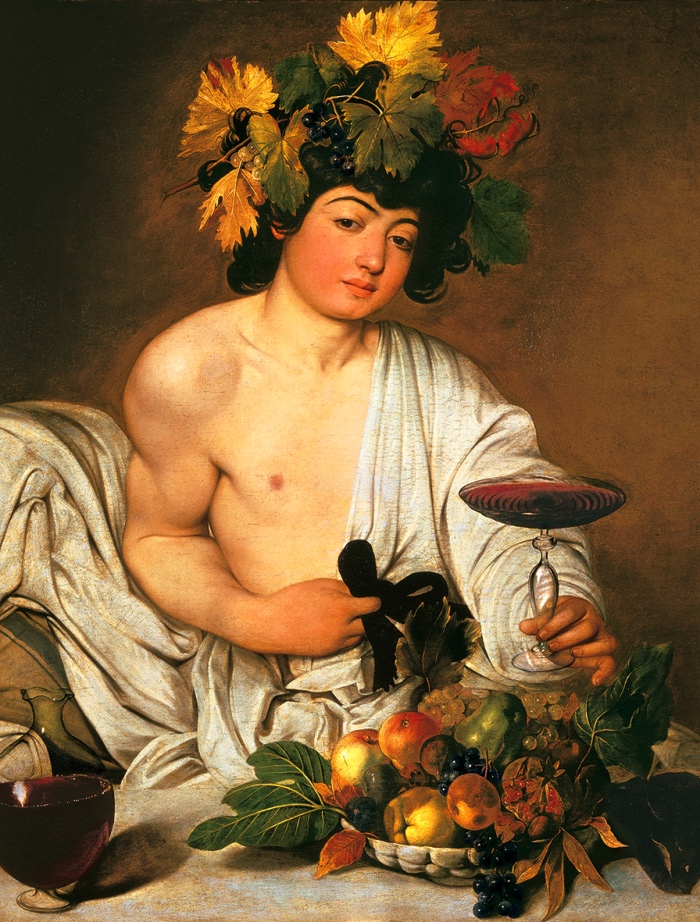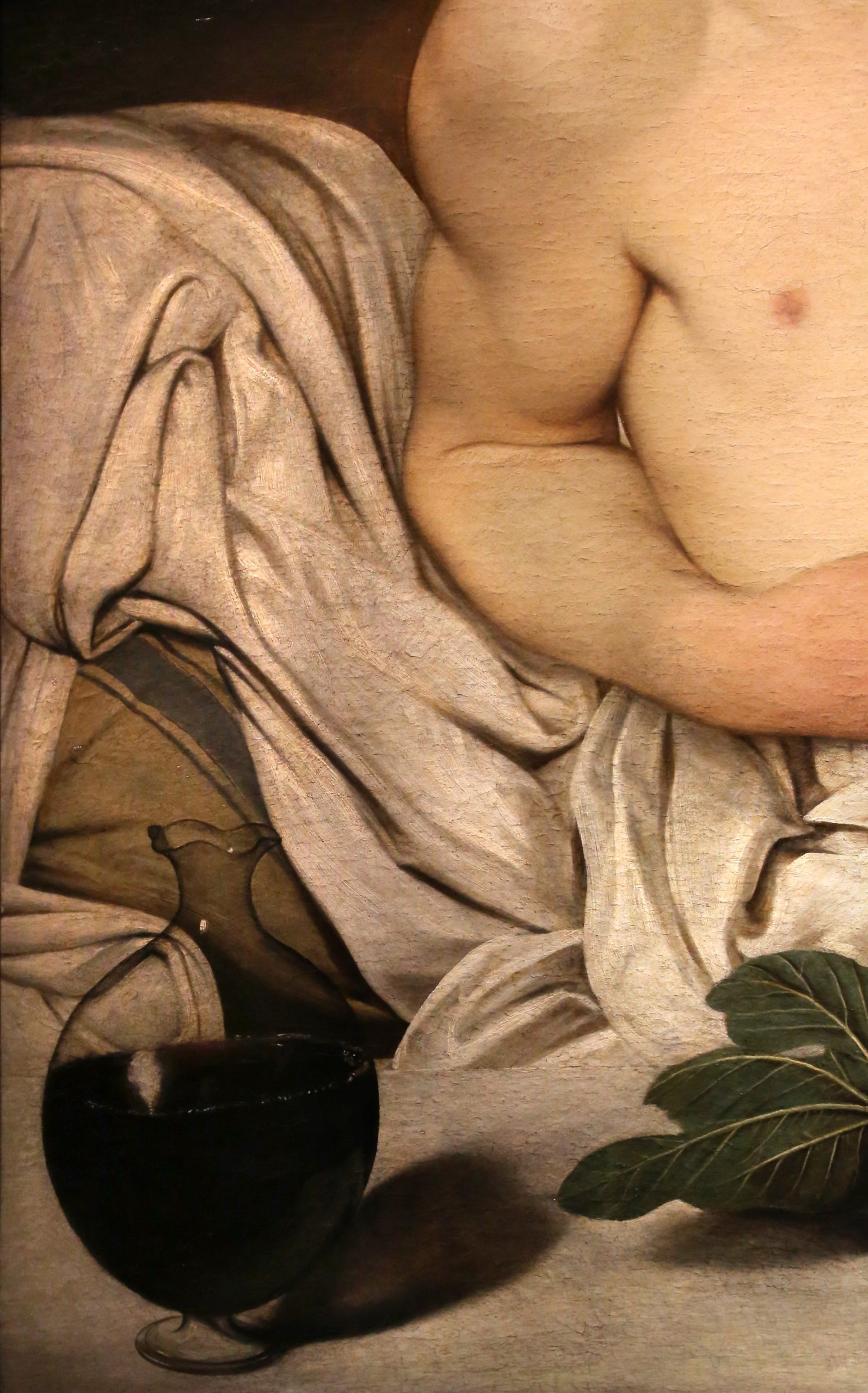
Caravaggio, Bacco
Caravaggio’s Bacchus is a timeless masterpiece that captures the spirit and essence of the Roman god of wine and intoxication of the senses. In this post I will describe this extraordinary work of art and we will discover together how Caravaggio, with his mastery in painting light and shadow, managed to convey the sensuality and vitality of Bacchus. Are you ready to immerse yourself in the intensity of ‘Bacchus’ and discover why this work continues to enchant and inspire viewers today?
Here we go!
Caravaggio’s Bacchus: the feast of the senses that becomes art

DESCRIPTION OF CARAVAGGIO’S BACCO
In this painting Caravaggio evokes the pagan deity of Bacchus, inserting all the references befitting the god of wine.
Rather than depicting a classical mythological subject, Caravaggio chose to depict a beautiful young man dressed as Bacchus and looking at the viewer while raising a goblet of wine, almost as if he wanted to toast our health.
Caravaggio’s Bacchus is an early painting and part of a series of works in which the subjects are all depicted as half-lengths. These include the Child with Basket of Fruit and the Sick Bacchus in the Galleria Borghese in Rome.
These are works with similar characteristics both in the description of the subject and in the naturalistic representation of the plant world. So much so that, when isolated from the rest of the composition, the fruit baskets all appear as a Natura morta in their own right.
Even in the Uffizi Bacchus, the fruit basket is a masterpiece on its own and brings to mind Caravaggio’s famous Still Life, exhibited in Milan at the Pinacoteca Ambrosiana.
PER CHI È STATO DIPINTO IL BACCO DI CARAVAGGIO
We do not know who commissioned Caravaggio’s Bacchus, but what is certain is that the painting was found in the Uffizi storerooms in 1913 and attributed to Michelangelo Merisi, known as Caravaggio, by art historian Roberto Longhi.
However, since it is an early work, dated between 1596 and 1597, Caravaggio probably painted it when he was in Rome under the protection of Cardinal Francesco Maria del Monte. This is why it is in Florence today, within the Uffizi collection of works. In fact, the Bacchus, together with Caravaggio’s Medusa, was donated by Cardinal del Monte to Ferdinando I de’ Medici on the occasion of his son Cosimo II’s wedding in 1608.
Trattandosi però di un’opera giovanile, data tra il 1596 e il 1597, probabilmente Caravaggio la realizzò quando si trovava a Roma era sotto la protezione del cardinale Francesco Maria del Monte. Per questo motivo si trova a Firenze oggi, all’interno della collezione delle opere degli Uffizi. Infatti il Bacco, assieme alla Medusa di Caravaggio, venne donato dal Cardinal del Monte a Ferdinando I de’ Medici in occasione delle nozze del figlio Cosimo II nel 1608.

A FEW CURIOSITIES ABOUT CARAVAGGIO’S BACCHUS
Caravaggio’s Bacchus is an extraordinary masterpiece. The artist was known for his ability to create astonishing realism in his paintings and ‘Bacchus’ is no exception. In the details of the work, such as the effect of the wine in the cup and the succulent grapes in the basket, one can appreciate the incredible attention to detail and mastery in the use of light and shadow. This realism enhances the immediacy and intensity of the work, allowing viewers to feel deeply involved in the experience of Bacchus.
Caravaggio did not want to depict the god Bacchus but an ordinary street boy in disguise, his head crowned with reddish vine shoots and bunches of grapes and covered with an old white sheet in imitation of ancient garments. The true subject of the painting thus seems to be a representation of a disguise.
The artist was famous for using his friends and street children as models. Famous is Caravaggio’s Death of the Virgin in which Mary is a simple girl with dirty feet.
His Bacchus is perhaps a drinking friend portrayed at a time when he is a little dazed by the fumes of alcohol. I like to think that Caravaggio asked him to disguise himself, hold a glass of wine and pose for him.
One of the must-see museums in Florence is the Uffizi Gallery, where you can admire this and aa are works by Caravaggio. However, Florence encompasses centuries of history and art. To find out more about its masterpieces and temporary exhibitions, visit the page dedicated to what to see in Florence. There you will find all the museums, exhibitions and places you should visit.

